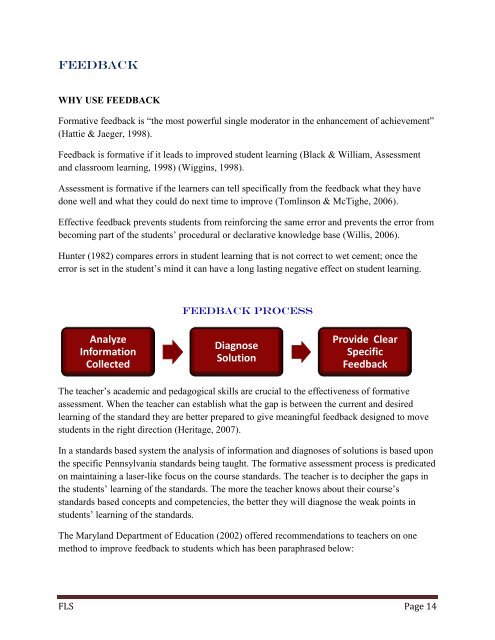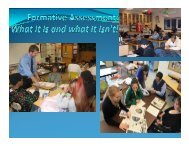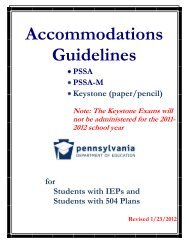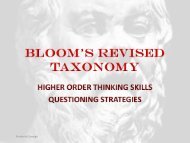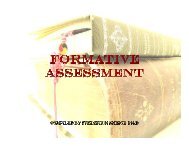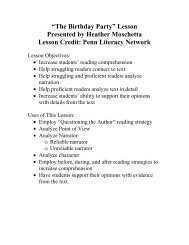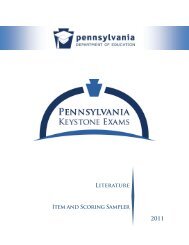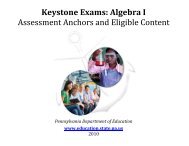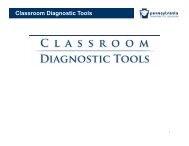FORMATIVE ASSESSMENT (Assessment for learning)
FORMATIVE ASSESSMENT (Assessment for learning)
FORMATIVE ASSESSMENT (Assessment for learning)
You also want an ePaper? Increase the reach of your titles
YUMPU automatically turns print PDFs into web optimized ePapers that Google loves.
FEEDBACK<br />
WHY USE FEEDBACK<br />
Formative feedback is “the most powerful single moderator in the enhancement of achievement”<br />
(Hattie & Jaeger, 1998).<br />
Feedback is <strong>for</strong>mative if it leads to improved student <strong>learning</strong> (Black & William, <strong>Assessment</strong><br />
and classroom <strong>learning</strong>, 1998) (Wiggins, 1998).<br />
<strong>Assessment</strong> is <strong>for</strong>mative if the learners can tell specifically from the feedback what they have<br />
done well and what they could do next time to improve (Tomlinson & McTighe, 2006).<br />
Effective feedback prevents students from rein<strong>for</strong>cing the same error and prevents the error from<br />
becoming part of the students’ procedural or declarative knowledge base (Willis, 2006).<br />
Hunter (1982) compares errors in student <strong>learning</strong> that is not correct to wet cement; once the<br />
error is set in the student’s mind it can have a long lasting negative effect on student <strong>learning</strong>.<br />
FEEDBACK PROCESS<br />
Analyze<br />
In<strong>for</strong>mation<br />
Collected<br />
Diagnose<br />
Solution<br />
Provide Clear<br />
Specific<br />
Feedback<br />
The teacher’s academic and pedagogical skills are crucial to the effectiveness of <strong>for</strong>mative<br />
assessment. When the teacher can establish what the gap is between the current and desired<br />
<strong>learning</strong> of the standard they are better prepared to give meaningful feedback designed to move<br />
students in the right direction (Heritage, 2007).<br />
In a standards based system the analysis of in<strong>for</strong>mation and diagnoses of solutions is based upon<br />
the specific Pennsylvania standards being taught. The <strong>for</strong>mative assessment process is predicated<br />
on maintaining a laser-like focus on the course standards. The teacher is to decipher the gaps in<br />
the students’ <strong>learning</strong> of the standards. The more the teacher knows about their course’s<br />
standards based concepts and competencies, the better they will diagnose the weak points in<br />
students’ <strong>learning</strong> of the standards.<br />
The Maryland Department of Education (2002) offered recommendations to teachers on one<br />
method to improve feedback to students which has been paraphrased below:<br />
FLS Page 14


